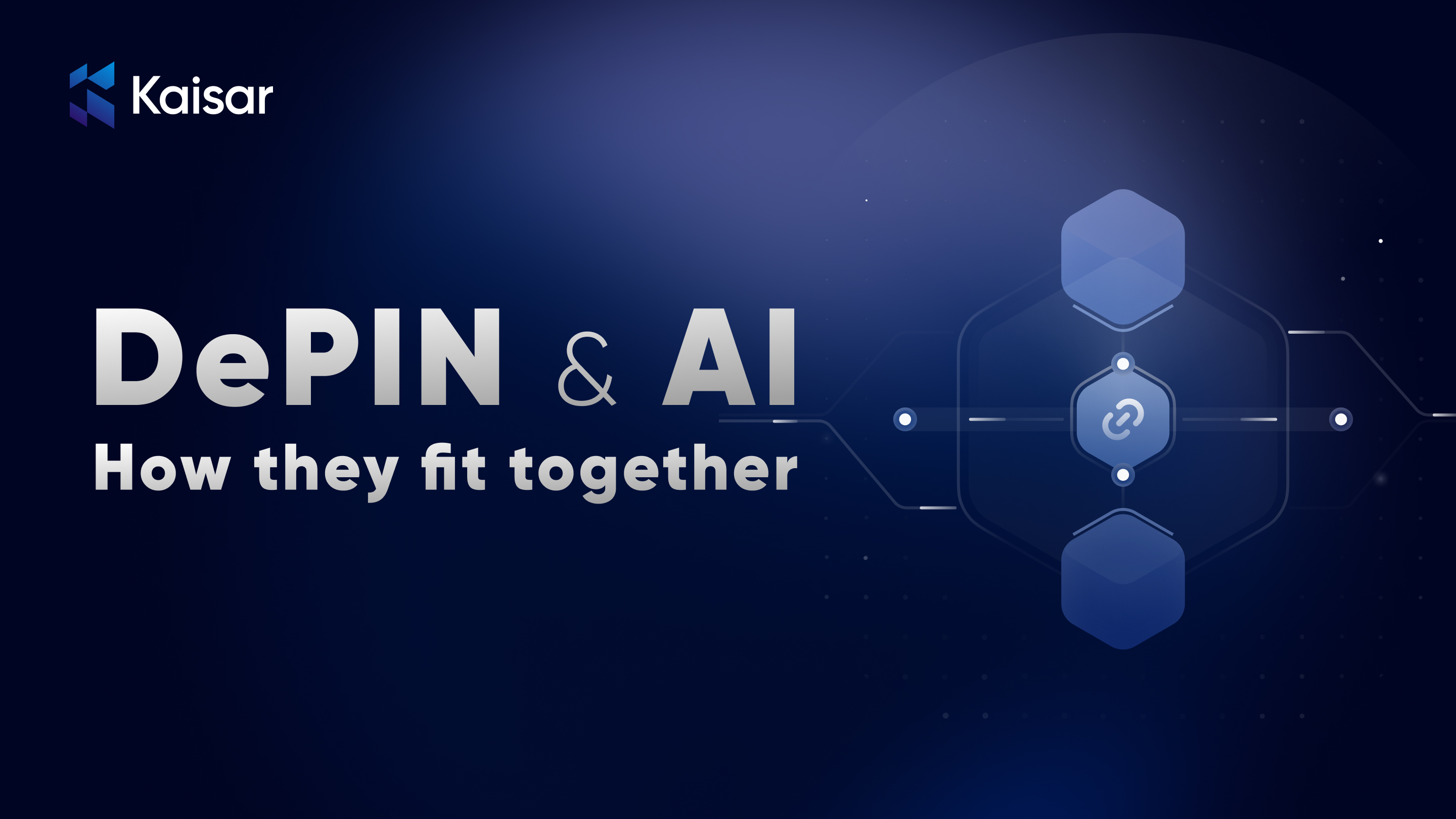As world becomes more and more interconnected, technologies in the form of Artificial Intelligence (AI) blockchain and distributed computing are fundamentally changing the the processes of many industries.
AI which is considered the backbone of modern innovation provides various applications to drive intelligent action of data whereas Blockchain and distributed computing gives rise to Decentralized Physical Infrastructure Networks(DePIN) which transforms planning and operations of physical infrastructure systems be it energy grids, computing power, or hardware.
Both DePIN an AI together aims to promise a future of innovation and intelligence over a fully decentralized, scalable infrastructure. This article will elaborate how these two technologies converge and what enormous benefits they bring to technology space.
What Is DePIN, AI and How They Work Together DePIN
DePIN
DePIN is a distributed network model specially designed for infrastructurally-intensive tasks. DePIN is different from the traditional centralized network model where one organization handling all the servers to process huge amounts of data.
With DePIN users can rent out their computing power, bandwidth, or storage to small or big entities that will collectively form a network.
AI
Artifical Intelligence (AI) depends on algorithms to automate decision-making ,make predictions and optimize processes across sectors. AI processes requires an intense amount of computer processing capabilities for model training, data analysis, and operations.
Currently most AI processes relies on centralized cloud computing service providers such as AWS or Google Cloud. However, DePIN can offers a decentralized alternative for the infrastructural needs of AI.
How they Work Together
- DePINwillprovidedecentralizedcomputing,storageandnetworkresources.
- AIwillprocessgiganticdatasetsonthedecentralizedinfrastructure.
- DePINwilldistributetheprocessingacrossthenetworkandprovidemoreresiliencetothe infrastructure.
- DePIN leverages blockchain technology for transparency and trust. This is helpful in various sectors such as healthcare, finance, or supply chain where the data needs to be handled in a verifiable and transparent manner.
- The distributed nature of DePIN let AI scale more effectively.
DePIN and AI Use Cases
At intersection of DePIN and AI exists many opportunities for all sectors, from optimized resource management to democratized access to computing power. Some of the use cases are outlined below:
Edge Computing
IoT devices are bound to generate heavier volumes of data that need to be processed by AI-driven edge computing solutions. DePIN networks are very well suited for such scenarios.
Imagine a network of smart cameras with AI which analyzes the traffic incidents, with centralized computing there could be latency in processing where as with local DePIN resources the processing can be done more quickly and efficiently.
Decentralized AI Model Training
Training an AI model requires a huge amount of data and computing resources. DePIN can provide decentralized computing power where contributors spare their GPU or CPU resources for training models collectively. This will provide democratized access to AI technologies and help small businesses and research institutions.
AI in Decentralised Energy Grids
DePIN, or decentralized infrastructure provide blockchain-based resource management within decentralized energy grids, Artifical Intelligence can be used to optimize these grids by predicting energy demand, supply, and eliminating waste. In cases where decentralized infrastructure fails to meet predicted capacity, AI will deploy more energy systems.
DePIN and AI Solutions
Mentioned below are some real-world solutions that exists at intersection of DePIN and AI:
Kaisar Network
Kaisar is a DePIN that aggregates spare GPU resources for AI computing. Using the distributed network principles Kaisar Network enables decentralized model training across a distributed network of GPUs democratizing access to AI and scalability without relying on centralized cloud providers.
Know more about Kaisar Network here.
IO Net
IO Net is focused on creating a decentralized network that aggregates idle resources from various systems to provide computing power for AI workloads. This approach lowers the cost of infrastructure for AI model training and inference by leveraging underutilized hardware resources across a distributed ecosystem.
Know more about IO Net here.
Render Network
Specialized in GPU rendering, Render Network allows users to contribute spare GPU power for rendering AI- driven tasks. Although initially designed for rendering graphics, its GPU capacity can easily be repurposed for AI workloads.
Know more about Render Network here.
Helium Network
Inclined towards decentralized wireless networks Helium Network has increasingly been experimenting with AI for improving the decentralized infrastructure. Helium can leverage AI to manage the network by analyzing real-time data, bandwidth needs, and optimal performance across all nodes
Know more about Helium Network here.
Conclusion
DePIN computing power and AI based optimized resource management can provide an uncountable number of opportunities for future developments. Every industry-from healthcare to finance, energy, and logistics will benefit from this convergence and can hope a better, transparent, and fairer future.
Leverage Kaisar DePIN for AI Workloads
Kaisar Network lies at the forefront of the DePIN providing scalable, decentralized GPU computing solutions tailored for AI. With Kaisar, you can access a global network of GPU resources, enabling faster, more affordable, and decentralized GPU computing.
Explore how Kaisar Network can complement your AI workloads!

